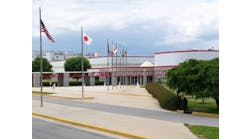This MTD exclusive was provided by tire and auto industry veteran Randy O’Connor, the executive director of TEN (Training and Education Network). He can be reached at roconnor@endeavorb2b. com. For more information, see www.mtdten.com.
Despite economic uncertainty, for the most part, it’s a great time to sell tires and service vehicles. And as the world continues to recover from the pandemic and we continue to watch markets closely, consumers seem to be more and more focused on a return to normal. But what will that “normal” look like? Here are some trends to follow and capitalize on:
Back in the public eye? Consumers are anxious to return to brick-and-mortal retail outlets. However, many have become accustomed to the digital shopping experience and will likely remain more comfortable with it well into the future.
Retail champions understand that it’s all about the customer experience. While it’s certainly possible to still deliver an excellent experience without much technology, many consumers have come to expect more.
Chances are - at least for most consumers - this involves the expectation that some sort of digital technology will be a part of that experience.
Personalization unlocks doors. Everywhere we turn, we see evidence that retailers are focused on creating a personalized experience for shoppers. Personalizing your customers’ experience provides you with an excellent opportunity to present something unique. We certainly can and should do our best to meet customers’ expectations on a personal level.
Generational changes. With each passing day, Gen Xers, members of Generation Z and millennials all become a bigger part of your customer base. These folks have grown up with more technology in their lives than previous generations. These consumers are also more environmentally conscious and informed than their predecessors.
And many are more frugal. Shaping the customer experience for these buyers is as much about reflecting their values as it is meeting their expectations. Digital tools will help you answer that call.
A firm hold on contactless service. Even though consumers have become more comfortable around others, they have come to appreciate certain trends that the pandemic forced all of us to adopt. Contactless payments are here to stay. What was once a safety precaution is now a recognized strategy for saving consumers valuable time otherwise spent signing receipts, counting cash and having to be in a particular physical location in order to complete a transaction.
The convenience of contactless payments is now an expectation - not a precaution or convenience.
Supply chain disruption rewinds the clock. We’ve all been affected by the massive disruption in the global supply chain. Servicing your customers due to this disruption has often been very challenging. This doesn’t appear to be changing anytime soon. As a result, we’re now having to focus on more old-school ways to meet customers’ needs in a timely fashion. It’s now, once again, about warehousing what you can, diversifying your supply chain and sourcing where you can.
Employee-focused approaches. Last - but most certainly not least - of the trends that are shaping your business on the heels of the pandemic is a hyper focus on inclusivity and engagement with employees. The stress that has accompanied the past few years has provided all of us with a fresh view of what’s important, how we choose to spend our time and with whom we spend it.
In addition, your team is likely younger than it was pre-pandemic. Younger people’s work expectations differ from those of previous generations. For them, it’s about employee empowerment, life/work balance and more of a focus on leveraging technology to make jobs easier.
We’re now in significantly transformative times and we need to leverage transformative trends to our advantage. Like it or not, normal will never be normal again. The sooner you can adapt, the better off your business will be.




